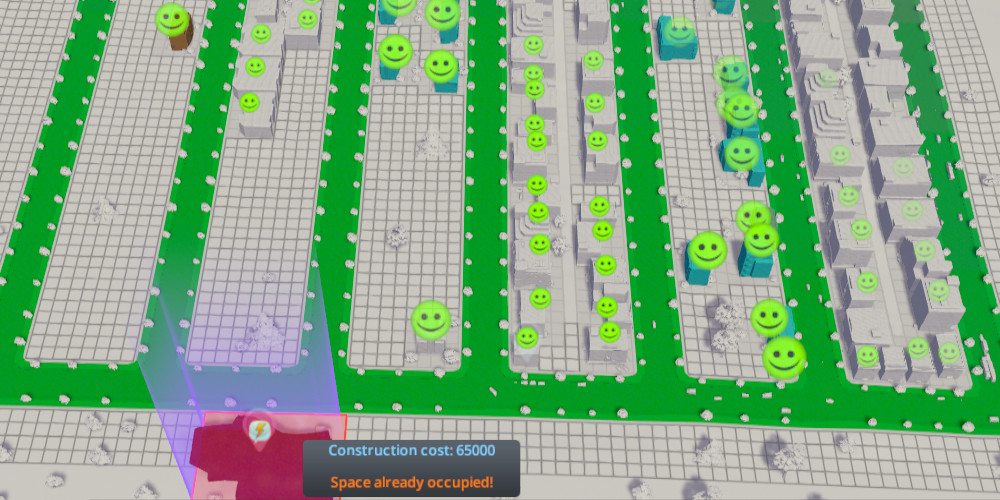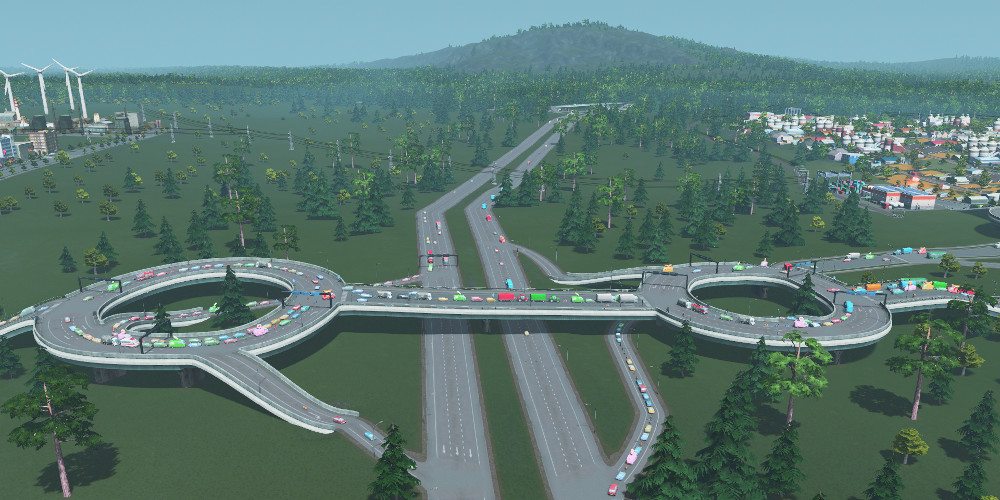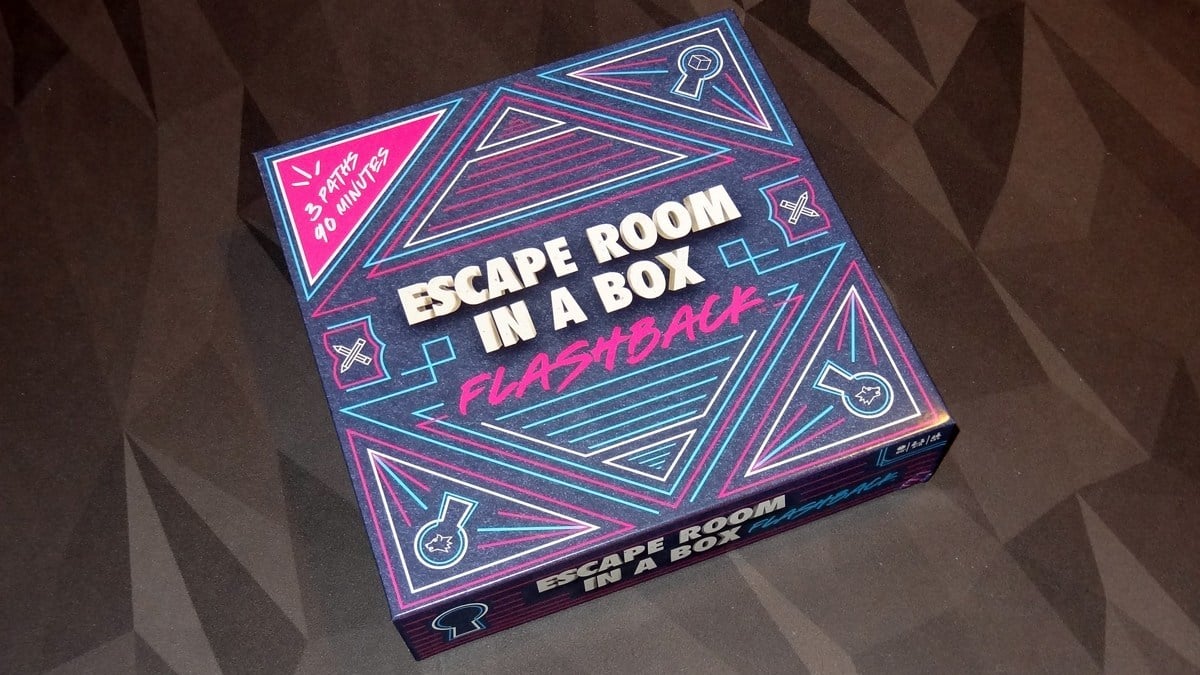
It may be a cliché opening for a game review, but the problem with writing about Cities: Skylines is that I can’t simultaneously play the game while writing a review. Steam has thoughtfully been totalling my play time and at over 32 hours in a week it looks like it’s fast becoming my second job.
City building is back, and it’s good to be the mayor.
Any review of a city building game invariably leads to comparisons to the long-standing juggernaut in the field, SimCity, and I could spend much of this article recapping the expectations and issues with its 2013 release, but that wouldn’t tell you much about Skylines. So while I will have to reference the rich pedigree that SimCity has laid down in talking about Skylines, you won’t find a smackdown comparison here.

Skylines is a traditional city simulator where you build and manage a growing urban center. You start with a single 2km x 2km plot, but as you achieve population goals you are given the opportunity to buy adjacent land. The map is huge, containing 25 such areas, and your city can cover up to a total of 9 plots for a whopping 36 square kilometers. That’s enough that I still haven’t filled up the space available to me on my first city.

All the basics you would expect are here, and the game clearly borrows heavily from the concepts laid down by SimCity. You can zone Residential, Commercial, and Industrial in a variety of densities (as well as a specific “Office” zone). There are the basic services to provide including electricity, water, sewage, garbage collection, fire, police, health, and education. Parks and trees are available to provide recreation as well as to give your city a visually attractive style. You can also place pedestrian pathways, which citizens will use to cut their commute when possible.

While most services work as you would expect, there are a few unique twists in Skylines. As part of health services you need to have cemeteries and crematoriums. Without a sufficient number of these, bodies begin to accumulate. At one point I failed to notice I wasn’t keeping up with demand and bodies stacked up around the city. People became sick and a mass exodus began; over ten thousand people left before I got the problem under control. Sewage also needs to be handled carefully. The basic service is simply an outflow pipe. Putting your intake downstream from one of these is definitely not a good idea for your virtual citizens. It just so happened I made this mistake around the same time the dead were collecting in my city and it seemed that everyone who hadn’t left town was instead in the hospital. I was able to pinpoint these issues using the game’s overlay tools, which don’t bring anything particularly noteworthy to the genre, but do provide all the data you would expect.
One unexpected treat was hydroelectric dams. Dams are placed by dragging them across a waterway. Depending on the terrain contour and how wide you make it, the dam will generate different amounts of electricity. Skylines then adjusts water levels, raising the level behind the dam (you can flood areas of the map) as well as lowering levels downstream. While cheap and clean, dams block shipping lanes and may affect your water pumps. The game is smart enough to change the water outflow from the dam based on electrical demand and you can find your downstream pumps suddenly running dry. And while that may make you think twice before plunking one down, consider this: they come with a road on top. How cool is that?

Another fun innovation are districts. These are named areas (neighborhoods), which you create by drawing a boundary for the district. Not just a bit of cartographical flavor, districts can have policies that apply just to that location instead of the whole city. This allows you to tailor industrial areas to specialize in a natural resource they’re located on, such as agriculture or mining. However, it also provides for creating parts of your city that have their own distinctive character. I took great delight in naming part of my town “The Glebe” and setting it up as a place for the champagne socialites of my city.

An argument could be made that the core of a city simulation is its transit network. Coming from developer Colossal Order, maker of the Cities in Motion series, you might expect Skylines to have a robust set of road and mass transit tools, and you would be correct. Roads are available in a variety of sizes and decorative variants (grass, trees, and barriers affect road noise as well as being a visual improvement) and include one-way roads, highways, and on-ramps. The road upgrade tool allows you to easily change between road types, even changing the direction of one-way roads with a simple right-click. While the road variety is good, it’s their ability to curve, intersect, and change height that really stands out. With so much flexibility you can build interesting and functional interchanges with multiple levels of road crossings and connections between them. My favorite so far has been to use elevated roundabouts for transfers at major intersections, or even with highway connections. Sadly, tunnels are absent, but with the ability to have more than three levels of overlapping road, I’m not complaining.

Taking a look at some of the forums, you might come to the conclusion that the game has significant traffic issues. That hasn’t been my experience. I have definitely hit points where I have had parts of my city bogged down in traffic, but the game has provided me the information and tools I need to correct the problem. In one case I had cargo trucks leaving my industrial section through the heart of my city. I was able to figure this out by inspecting the vehicles in the traffic jams and corrected the problem by providing cargo train and harbor connections to their district. Similarly, I was able to isolate high residential traffic to a commercial zone and provide a new subway line to free up the road.

Speaking of mass transit, this is another area where Skylines provides players with some incredibly powerful tools. Rather than plunking down a number of bus stops and letting the drivers figure out where to go, or building subway tunnels and having all the stops connected by default, it’s up to you to make your own routes. When I first encountered this I expected I would find it tedious. Instead, it is a highly enjoyable mini-game and design component as you design the best way to move your citizens around your city.
Your bus routes don’t require the creation of physical stops (thankfully) and the game even renders the bus stop indentation on the road to get your bus out of the way of traffic. For both buses and subways your routes are always loops, but you can choose to follow the same path on your return trip to make it a line if you prefer. Routes can be color-coded as well, allowing you to evaluate your network holistically. The buses even color themselves to match their route color!

Traffic is highly complicated in real life and simulating it for a large city is a full-time profession requiring complicated tools, so it’s no surprise that Skylines may have abstractions and some inconsistencies. But this isn’t the same as saying that the traffic model is broken. I have had a blast tinkering with my intersections, zones, and mass transit. The community has also written a number of posts detailing good design and helpful tips; experimenting will get you the rest of the way.
Visually, Skylines is quite appealing with detailed terrain, fog, depth of field effects, and attractive buildings. It isn’t as pretty as the most recent SimCity, and it seems to have a smaller set of available buildings (meaning you’ll notice the same models used repeatedly), but it gets the job done. I found myself taking tours of my city, sometimes by following traffic, and marveling at how great it looked. Sound effects are well done (if annoyingly repetitive over agricultural land) and the music is fitting. The game was rock-solid-stable for me, without one crash in all my hours so far.

I have a few complaints. Water pipes make a return, and just feel like busy work (though thankfully they carry both water and sewage). Having to manually bulldoze buildings after fires is also a task that should have been automated. Mass transit route management really needs a tutorial, and it would be helpful if each new route was assigned a random color on creation (you actually have to change the colors from the Transport overlay, not the route designer interface). Not being able to see zone colors while designing mass transit makes it unnecessarily tricky to plan stops.

In addition to those quibbles, there are some questionable design choices. The game includes a Twitter-like bird called Chirper at the top of the screen via which your citizens can “chirp” you. A fun idea, but the useful information that some chirps could provide (such as the water stinking) is lost in a sea of repetitive or unimportant chirps and you’ll soon find yourself ignoring it. Another issue is simply a matter of balance. Money comes in to the city’s coffers unlike any city I’ve ever heard about. The default game almost feels like it has been set in sandbox mode after you get your initial neighborhoods laid down and a modest income flowing. The challenge won’t be in your budget, but in your traffic management and service provision.

More concerning for some players is the absence of disasters. I haven’t found myself missing them; disasters while working on my city has always annoyed me and I’ve disabled them when given the chance. Instead, I would save the UFO attack for when I was done with my city, scorching the earth so I could move on to a blank canvas. If you’re a fan of this aspect of city simulations you’ll have to settle for more creative means to rain misery upon your citizens (such as letting dead bodies collect).
The amazing thing is that almost all my above complaints can be addressed through the Steam Workshop. The game can be updated to look more vibrant, Chirper can be toggled off, and there’s even a disaster. Colossal Order has opened the floodgates to a large and convenient source of DLC that won’t cost you an additional dime, the scope of which could be an article on its own. A short perusal will find you more terrain, custom buildings (many based off real world structures), and modifications that include citizen trackers, disabled clouds, traffic light control, and even a flight simulator. I highly recommend you make a stop in the Steam Workshop after you get familiar with the game. Even those without modding skills can participate: the built-in editor allows players to make pre-fabricated components for re-use in their own game, such as complicated interchanges, and place them in the Workshop.

I would have liked to see some kind of multiplayer aspect to the game, but am not at all surprised that Colossal Order stayed clear of that minefield. There is a Paradox account login on the title screen, but it’s entirely optional and has nothing to do with the gameplay (a quick search tells me it’s about forums and support at Paradox). Yes, for those of you concerned, this is a fully offline game experience, though Steam Cloud is supported if you find yourself bouncing between computers.
Cities: Skylines is a triumphant return of the city simulation game and is set to form fond memories for a new generation of sim mayors. It presents meaningful challenges along with the tools to meet them, and its traffic model is particularly rewarding to master. While it isn’t breaking much new ground, it is a near perfect execution of the core aspects of a city simulation, bringing a satisfying size to your city along with some flair in the form of mass transit routes, waterway usage, and an openness to modification that looks poised to provide an exceptional longevity. You can get it on Steam for $29.99 (U.S. store), but make sure you say goodbye to your loved ones first; you may not be able to stop playing.




I got over the chirpy bird after not to long of playing. With the fantastic mod support though I’ve found myself loving the game to death and can’t wait for people to create some more exciting mods. I hope one day they make a mod which puts fences around the backyard of everyone’s houses and connects them to the house.